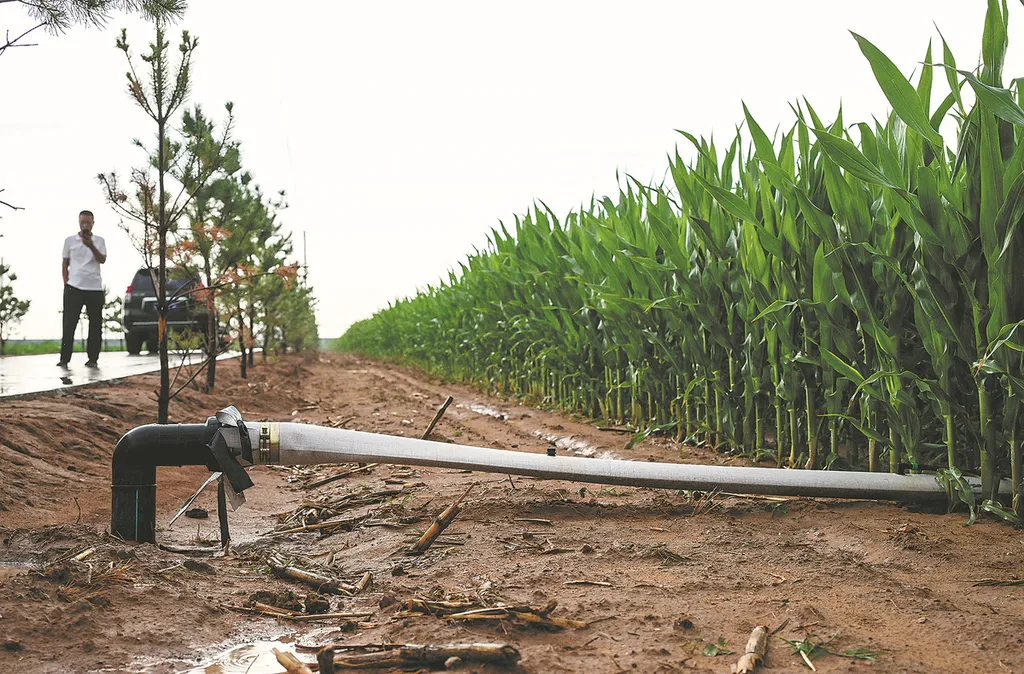In the ever-evolving landscape of irrigation technology, a groundbreaking innovation has emerged from the labs of the Changchun Institute of Technology in China. Led by LIU Hongtao, a team of researchers has developed a novel water-diverting rotary gate that promises to revolutionize the way we measure and control water flow in irrigation systems. This development, detailed in a recent study published in ‘Guan’gai paishui xuebao’ (translated to English as ‘Journal of Irrigation and Drainage’), could have significant implications for the energy sector, particularly in enhancing water use efficiency and quality.
Traditional sluice gates, while functional, often fall short in meeting the multifunctional needs of modern irrigation systems. They lack the precision and adaptability required for smart irrigation. Enter the water-diverting rotary gate, a device designed based on the hydraulic principle of turbine volute. This innovative gate not only measures flow accurately but also controls water effectively, addressing the growing demand for integrated solutions in irrigation.
The research team conducted a series of numerical simulations and physical experiments to evaluate the hydraulic performance of the rotary gate. They tested the gate under various rotational speeds, with flow rates ranging from 3.00 to 10.08 liters per second. The results were impressive. The flow measurement formula derived from the physical model showed an average relative error of just 3.35%, with the minimum error being a mere 0.28%. This level of accuracy is a game-changer for the industry.
One of the most notable findings was the gate’s ability to significantly improve water aeration. As LIU Hongtao explained, “The rotation of the gate increased the maximum dissolved oxygen in the water by 108.30% and the average by 100.54%. This enhancement in oxygenation capacity can greatly benefit irrigation systems, promoting healthier plant growth and improving water quality.”
The study also revealed that local head loss accounted for an average of 46.03% of the total upstream stable head, with a minimum value of 16.48%. This information is crucial for understanding the gate’s impact on water pressure and flow dynamics.
The simulation results aligned well with the experimental data, further validating the gate’s performance. The average error in water depth was 0.77%, and the minimum error was 0.07%. The average error in simulated flow rate was 4.39%, with the minimum error being 0.09%. These figures underscore the reliability and accuracy of the rotary gate.
The implications of this research extend beyond the irrigation sector. In the energy sector, efficient water management is crucial for power generation, particularly in hydroelectric plants. The water-diverting rotary gate’s ability to measure flow accurately and control water effectively could enhance the efficiency of these plants, leading to significant energy savings.
Moreover, the gate’s enhanced oxygenation capacity could improve water quality in reservoirs, benefiting both the environment and the energy sector. As the world moves towards more sustainable and efficient energy solutions, innovations like the water-diverting rotary gate will play a pivotal role.
This research, published in ‘Guan’gai paishui xuebao’, marks a significant step forward in irrigation technology. The water-diverting rotary gate’s simple structure, multifunctionality, and impressive performance make it a promising technology for the future. As LIU Hongtao and his team continue to refine and develop this innovation, the potential for its widespread adoption and impact on the energy sector grows ever more apparent. This is not just a leap forward in irrigation technology; it’s a stride towards a more sustainable and efficient future.

